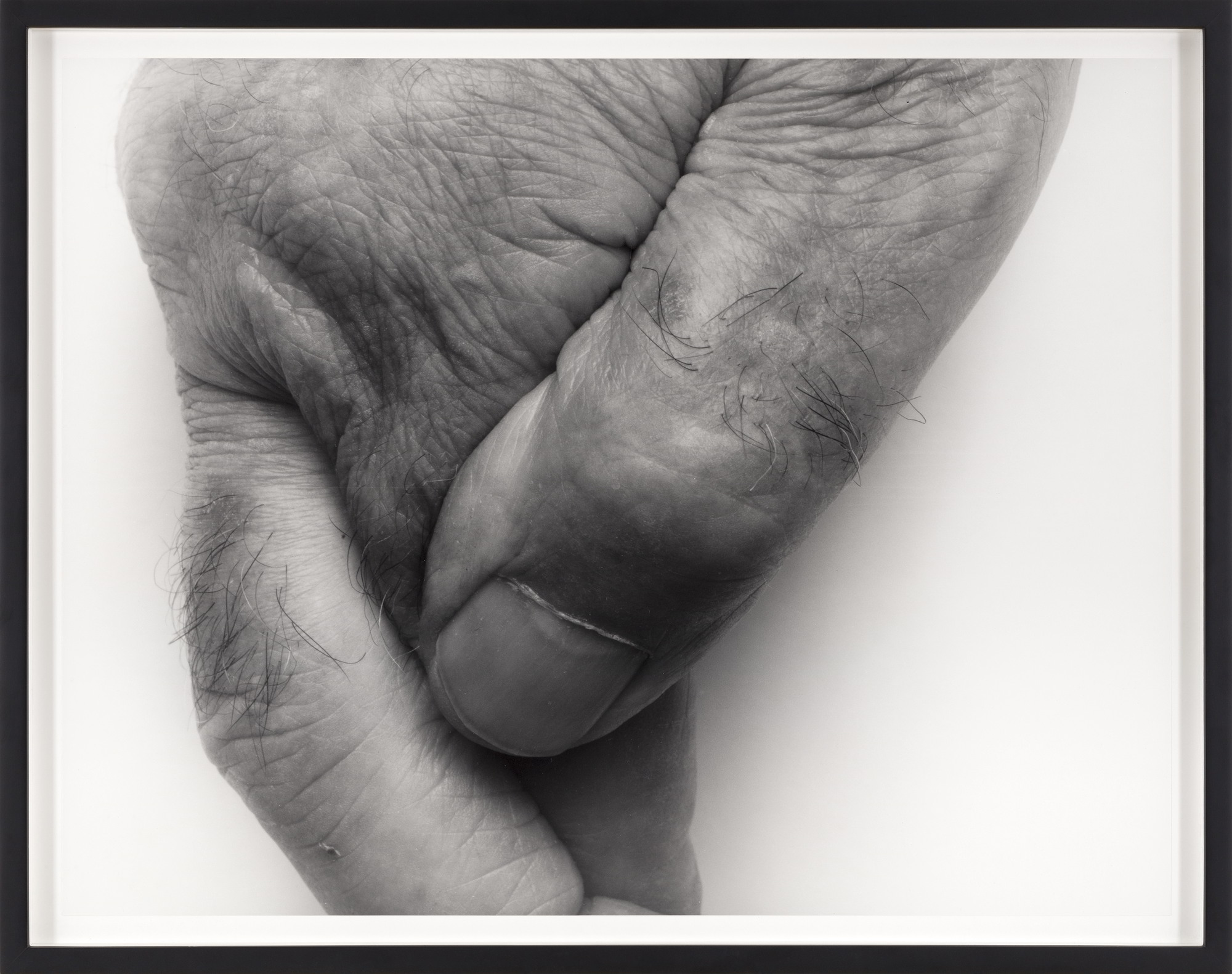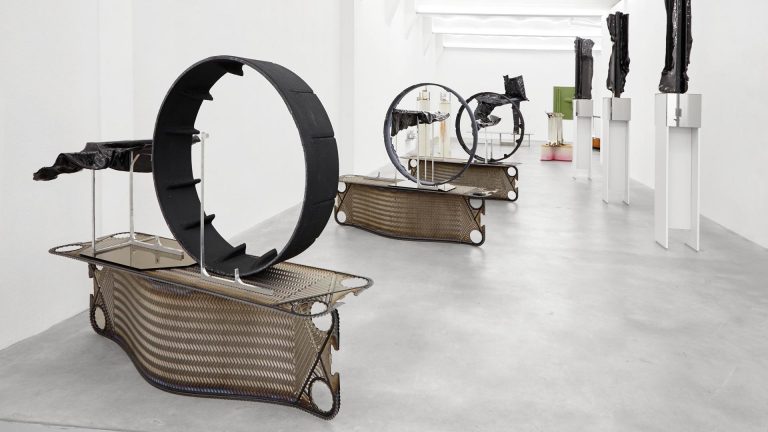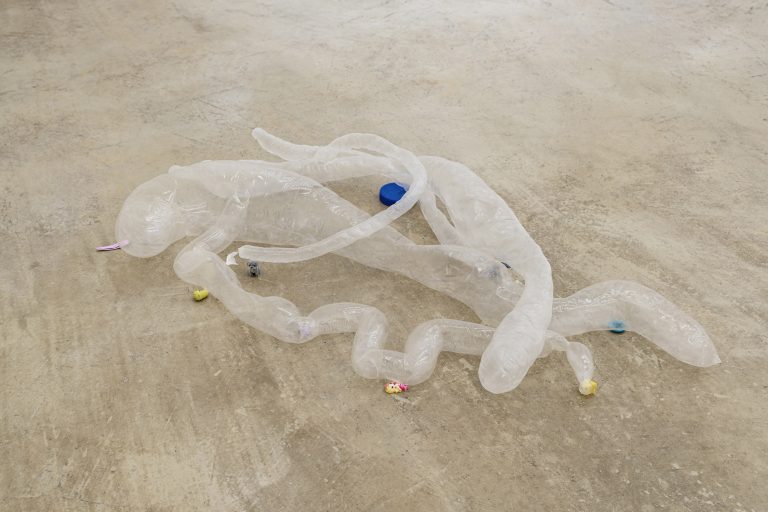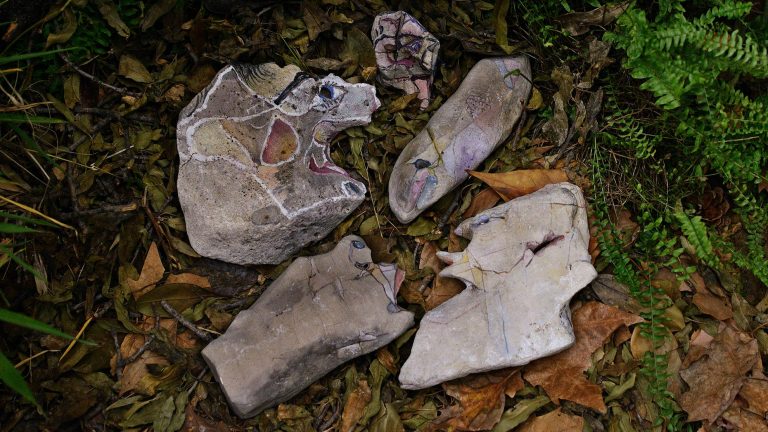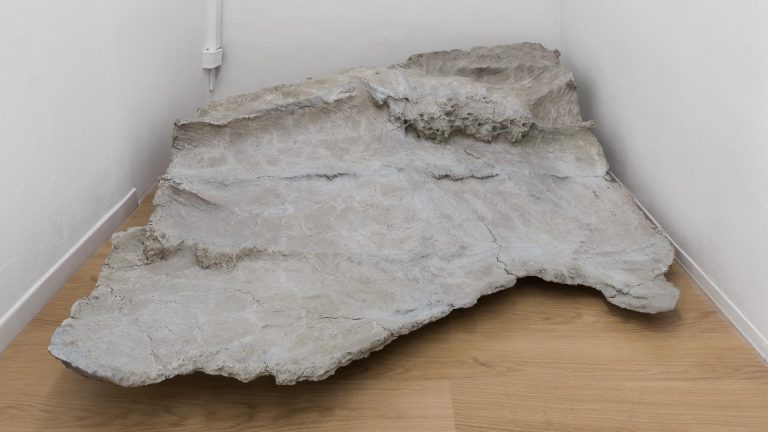Artists: June Crespo and John Coplans
Exhibition title: foreign bodies
Curated by: João Laia
Venue: P420, Bologna, Italy
Date: January 27 – March 10, 2018
Photography: All photographs courtesy of P420, Bologna
foreign bodies establishes a dialogue between the work of June Crespo and John Coplans in order to analyse contemporary material and visual cultures. The artists’ shared interest in the friction between individual and collective social dynamics finds a core theme in their analysis of the body and its representation. The exhibition proposes a contaminated webbed space of echoes and flows that underlines the emotional and haptic layers of our identity, commenting on our everyday engagement with a highly mediated environment. June Crespo (1982) has recently completed a two-year residency at De Ateliers in Amsterdam (2015-17). Having lived, studied and worked in the city of Bilbao for most of her life, the artist is part of the region’s sculptural tradition, known for its horizontal collaborative dynamic linking different generations. Figures such as Ángel Bados and Txomin Badiola, Crespo’s teacher at the school of fine arts, belong to this tradition. While also employing methods found in the Basque country’s sculptural context, like the serial reproduction of shapes and objects, Crespo’s careful analysis of the body is a paradigmatic case. The artist’s practice projects a sensual investigation of contemporary representational regimes, based on a corporeal exploration of the world. Her interest in the hybrid conditions of the body-object and the frameworks through which it circulates is translated by an affect-led approach to reality and employs poor materials like concrete, metal and fabric. While the work incorporates personal stories and events, by and large it bypasses narrative strategies, opening up different avenues of interpretation while formulating a powerful commentary about dominant representational regimes.
Born in the uk and having spent several periods during childhood in South Africa, John Coplans (1920–2003) relocated to the usa in 1960. His early painting reflected the influence of Tachisme and Abstract Expressionism. Deeming his practice derivative, and feeling conflicted about his dual position as an artist and critic, Coplans abandoned artistic practice to fully embrace art writing. He was one of the founders of Artforum and worked for the magazine from 1962 until 1977 (acting as editor-in-chief since 1972). In 1978 John Coplans shot his first photograph. As a former art critic, Coplans was surely aware of the loose group known as the Pictures Generation, which included artists such as Cindy Sherman and Richard Prince. Unlike this group, however, Coplans did not employ montage or appropriation as preferred methods, and instead developed a strict modus operandi that included using Polaroid black and white film to capture exclusively his naked headless body. His images question popular culture’s crystallised take on masculinity, constituting counter-monuments that celebrate decay and vulnerability.
The first room presents newly produced pieces made during Crespo’s stay in Bologna. A number of concrete and abstract elements reappear throughout the space, employing objects such as clothes, drills, heating systems, enlarged vase-like shapes and window frames. The freestanding structures activate a self-awareness of one’s own presence and corporeality in the room enacted by the scale of the works, their horizontal and vertical positions, as well as their spatial configuration which determines one’s movements in the room. The ambiguous sets are defined by movements of extension and contraction that signal the tension inherent to a fragmented existence described by the artist as “a closed but broken form”. Likewise, the numerous references to penetration or stretching enacted by the objects, as well as their allusions to vital components like nervous or circulatory systems, bear witness to an identity determined through contact with multiple agents, emerging from the interior and exterior of the self and permanently mediated by the body. Crespo’s universe speaks of the transmission structures that permeate our material and symbolic existence, pointing to our composite constitution built out of biological factors, collective and personal settings, physical surroundings and temporal coordinates.
A selection of John Coplans’ photographs is the predominant feature of the second room. The uncanny elements shown by Crespo, which reappear in this space, find a parallel in Coplan’s images. The walls are taken over by unusual perspectives of body parts built out of the combined action of form and content. On the one hand, there are the bizarre framings that cut the figures, as well as their particular positions and their unsettling sense of scale, composed in some instances by extreme close-ups. On the other, the physical features of the actual bodies, aged and flaccid, form eerie portraits which are rarely seen. The recurrent absence of a face triggers a striking contrast with the age of the selfie. Coplans has indicated his interest in the grotesque as a thread of interpretation of his work, noting how in the medieval Romanesque it hinted at the frightening experience of people not being sure of what the human body was and where its humanity could be found. By estranging the body, fragmenting or even mutilating it, Coplans’ photographs destroy our familiarity with and immediate ability to recognise the human, introducing the presence of the other in the self.
The body in these images is no longer a stable entity, but rather something in motion, caught midway between collapse and rebirth, human and monstrous, formulating a poignant reflection about change, mortality and time. Like Crespo’s entities, Coplans’ figures are at once absurd, fragile, monumental, provocative, and sensual. The idea of the double or the other, emerging out of the methodical use of repetition, observed in gestures of dismantling and reassembling, underlines the shared non-narrative features of the work. Combining familiarity and alienation, the practices of the two artists address a number of questions that convey a sense of our contemporary condition. The fragmented presences projected by their work echo the on-going disintegration and reconfiguration of bodies and matter while flowing in the current digital regime, reflecting the queer plasticity of contemporary identities. Questioning homogeneous and dominant approaches to the corporeal and the symbolical, this exhibition proposes dissident portraits whose porous universes reflect our decentred position in an unknown world in flux.
-João Laia
June Crespo and John Coplans, foreign bodies, 2018, exhibition view, P420, Bologna
John Coplans, Self Portrait, Thumb and Fingers I, 1999, gelatin silver print, cm.60×78. Courtesy of P420, Bologna & The John Coplans Trust, New York
June Crespo and John Coplans, foreign bodies, 2018, exhibition view, P420, Bologna
June Crespo, To be two, 2018, concrete, pigments, textile, cm.59x52x53. Courtesy of P420, Bologna & the artist
June Crespo and John Coplans, foreign bodies, 2018, exhibition view, P420, Bologna
June Crespo, The same heat, 2018, concrete, pigments, blanket, strap, cm.26x63x53. Courtesy of P420, Bologna & the artist
June Crespo and John Coplans, foreign bodies, 2018, exhibition view, P420, Bologna
June Crespo, The same heat, 2018, concrete, pigments, T-shirt, cm.59,5x42x16. Courtesy of P420, Bologna & the artist
June Crespo, The same heat (poppy), 2018, concrete, pigments, jumper, cm.46×51,5×25. Courtesy of P420, Bologna & the artist
June Crespo and John Coplans, foreign bodies, 2018, exhibition view, P420, Bologna
June Crespo and John Coplans, foreign bodies, 2018, exhibition view, P420, Bologna
June Crespo, The same heat, 2018, concrete, pigments, jumper, cm.36x93x52. Courtesy of P420, Bologna & the artist
June Crespo and John Coplans, foreign bodies, 2018, exhibition view, P420, Bologna
John Coplans, Interlocking Fingers, No. 14, 1999, gelatin silver print, cm.119×97. Courtesy of P420, Bologna & The John Coplans Trust, New York
June Crespo, To be two, 2018, concrete, cm.125x22x17. Courtesy of P420, Bologna & the artist
John Coplans, Knees with Fist, Side View, 1984, gelatin silver print, cm.67,3×71,1. Courtesy of P420, Bologna & The John Coplans Trust, New York
John Coplans, Interlocking Fingers, No 16, 2000, gelatin silver print, cm.78×60. Courtesy of P420, Bologna & The John Coplans Trust, New York
June Crespo and John Coplans, foreign bodies, 2018, exhibition view, P420, Bologna
John Coplans, Elbow, 2000, gelatin silver print, cm. 89×79 (x2). Courtesy of P420, Bologna & The John Coplans Trust, New York
June Crespo and John Coplans, foreign bodies, 2018, exhibition view, P420, Bologna
June Crespo, The same heat, 2018, concrete, pigments, T-shirt, cm.59,5x42x16. Courtesy of P420, Bologna & the artist
June Crespo and John Coplans, foreign bodies, 2018, exhibition view, P420, Bologna
June Crespo and John Coplans, foreign bodies, 2018, exhibition view, P420, Bologna
John Coplans, Self Portrait, Torso II, 1984, gelatin silver print, cm. 44,5×51,1. Courtesy of P420, Bologna & The John Coplans Trust, New York



